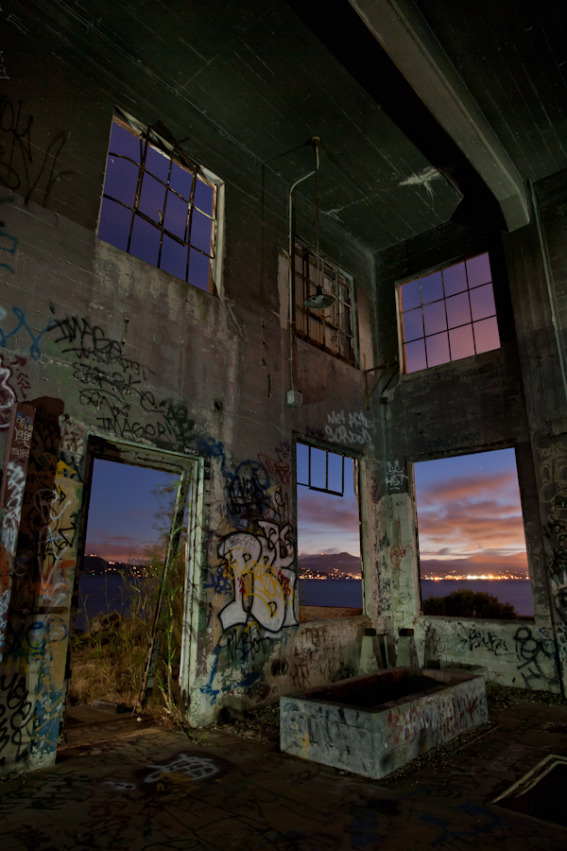Elevator at a former Northern California Navy fuel depot in use from 1941 through 1995.
Photo: "USS Iowa with her tugs"
On Saturday, May 26 at 10:30am, the USS Iowa left the pier in Richmond to begin her four-day journey to Long Beach where she will become a museum.
U.S.S. Iowa BB-61: Benicia to Richmond
On Thursday October 27, 2011, USS Iowa was removed from the Suisun Bay Mothball Fleet and placed at the Port of Benicia, where she spent one night before beign transferred to Richmond. For the next three months, USS Iowa will undergo significant refurbishment before making the long journey to Berth 87 in Los Angeles where she will become an interactive museum.
The battle this ship has experienced since her decomissioning was politically based and spanned across the past ten years as she sat in Suisun Bay. There was always a push to turn the battleship into a museum in San Francisco, but the Board of Supervisors was against mooring a miliitary ship based on a "homophobic entity" within the confines of the city, which caused other organizations to raise money in the hopes to move the ship to another California dock.
USS Iowa is the last of four remaining battleships of its kind and the last of the four to be turned into a museum. The 887 foot long USS Iowa, built in 1940, was the fastest ship in her class of battleship and the only ship of her class to have served in the Atlantic Ocean during World War II. Her main battery consisted of nine 16"/50 Caliber Mark 7 guns which could fire 2,700lb shells approximately 20 miles.
In 1989, during a gunnery excersise, an explosion occurred in the center gun room destroying Turret #2 and killing 47 sailors.
The ship was decomissioned in 1990 and placed in the Suisun Bay Reserve Fleet short thereafter.
Port of Benicia
Leaving the Port of Benicia
Approaching the Carquinez Bridge
USS Iowa after passing under the Richmond Bridge
Nearing Berth 3 in Richmond
Tugboat pushes USS Iowa towards the pier
Aft guns
Arriving at Berth 3 in Richmond
Flying the US Flag in Richmond
Forward 16"/50 caliber Mark 7 guns
Portside guns, 5"/38 caliber twin turrets
Securing the mooring lines
Crew
Crew
WWII Veteran Joe served aboard USS Iowa during her first deployment in 1942.
Photo: "Slow Grace"
Point Richmond, California.
Night. Full moon. 80 seconds. Interior lit by LED flashlight. Exterior lit by moon and ambient light.
Photo: "Majestic"
Whirley Crane at the Kaiser Shipyard #3.
The Richmond Shipyard #3 was one of four shipyards in Richmond, but the only one designed to be permanent. Toegether, the four shipyards produced 747 ships during World War II, which was more than any other yard in the country. The Shipyard used “Whirley” cranes to move prefabricated ship components into place. The Whirley Crane got its name due to the crane's ability to turn a full 360 degrees, which allowed the boom to achieve efficient speed.
Photo: "Pipelines"
Beneath the dry docks in Richmond, CA.
Kaiser once employed 90,000 men in its four shipyards in Richmond, CA. These yards were responsible for constructing 747 ships during the war.Of these shipyards, Kaiser Shipyard #3 is the only permanent shipyard that still remains today.
Photo: "The Walrus Man"
Abandoned warehouses along Richmond's waterfront; San Francisco skyline in the background.
(Night. 150 seconds. Lit by ambient moonlight and full moon.)





















